We thought we’d said goodbye to 2021’s High Fives but here’s a late contribution from Mike Butterworth with some great shots from gigs he’s managed to get to this year. We may have a final Hogmanay contribution from Allan on the 31st; who knows?

Like last year many of my usual festivals were postponed again and many of the independent and small venues were not open for business, this includes The Half Moon at Putney who were forced to close and break their run of live music every day since they started in 1963!
Nile Rodgers @ The Big Feastival, Oxfordshire
At only my second festival of the year there was an amazing headline performance by Nile Rodgers. An incredible musician and although I was aware of his broader influence, he played songs from several artists, as well as classic Chic songs.
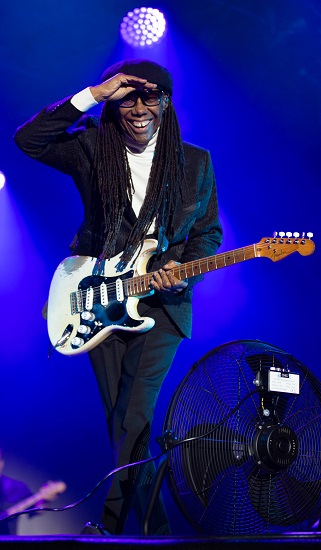
With Bernard Edwards (also from Chic), Rodgers wrote and produced music for other artists, including the songs “He’s the Greatest Dancer” and “We Are Family” for Sister Sledge and “I’m Coming Out” and “Upside Down” for Diana Ross. After Chic’s breakup in 1983, Rodgers produced several major albums and singles for other artists, including David Bowie’s Let’s Dance, “Original Sin” by INXS, Duran Duran’s “The Reflex” and “Notorious”, and Madonna’s “Like a Virgin”. He later worked with artists including The B-52s, Jeff Beck, Mick Jagger, Grace Jones, The Vaughan Brothers, Bryan Ferry, Christina Aguilera, Lady Gaga, and Daft Punk, winning three Grammy Awards in 2014 for his work on their album Random Access Memories.
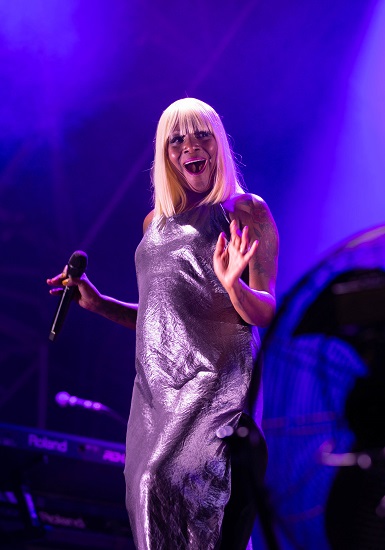
Leddra Chapman @ The Jazz Café, Camden
Like many gigs this year, a lot of them were ones that were rescheduled from 2020. This gig was supposed to be played on the 10th anniversary of the release of Leddra’s debut album ‘Story’, but as it was postponed for the third week March 2020, we had to wait 19 months! She rose to prominence when her debut single, “Story”, was released on 7 December 2009 to much critical success and strong radio support and play from Terry Wogan on BBC Radio 2 during his last weeks as host of the station’s breakfast show.

Playing to a full house, and so pleased to finally be playing to an audience, Leddra perfomed all the songs from her debut album.
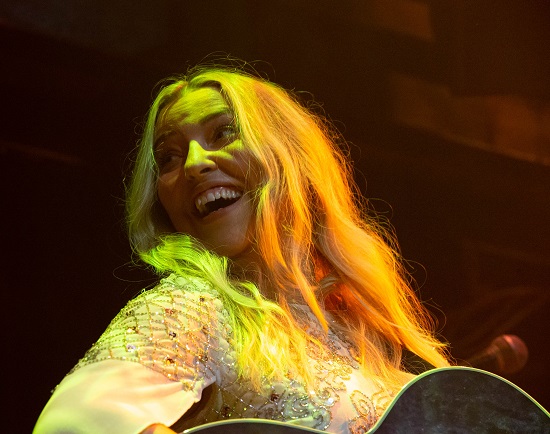
Cloudy Galvez @ Servant Jazz Quarters, Dalston
Cloudy is an up-and coming artist pioneering the introduction of a new sound: 12-string progressive soul with a touch of pop. Whether accompanied by drums and bass, or solo, Cloudy delivers one thing live that other artists don’t: the non-stop set. The songs flow from one to another through beautiful improvised transitional sections, allowing the music to breathe and do the talking for itself. It truly is a captivating continuous mix of original material, packed with push-and-pull, catchy hooks and beautiful melodies inspired by her Colombian heritage, designed to catch your attention and stay in your head for days.
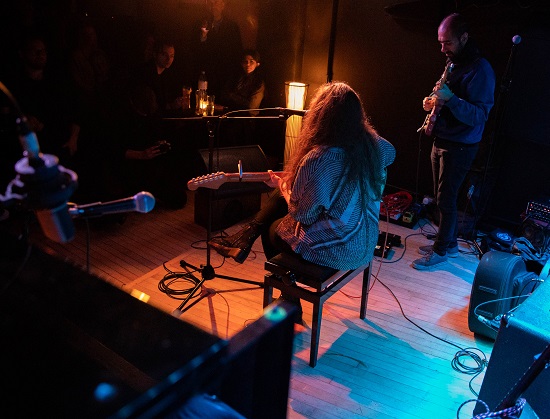
This evening, being her first full gig since contracting long COVID, she was only able to play a six-string guitar as her usual 12 string is still too heavy. Another notable difference was her more conventional set, with breaks between her songs – as she still doesn’t have the energy to play continuously. That said, her slightly lower tone to her voice, requiring a lower key for one of her songs, was sounding amazing and a remarkable achievement given her situation a year ago. Many of the songs were reflective of her last 18 month, not only of lockdown, but the dramatic changes in her own life as a result of COVID.
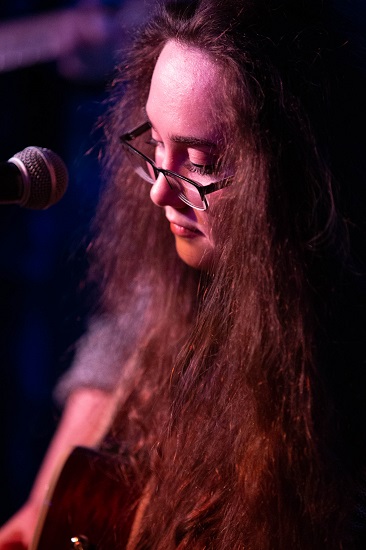
Lauren Housley @ The Half Moon, Putney
Lauren is a singer and songwriter hailing from Yorkshire, UK. Her love of music started early, with a deep connection to great songs, the craft of storytelling and an emotive vocal performance. “It was like magic to me, that music could have such an impact on the way I felt. It became my therapy.”
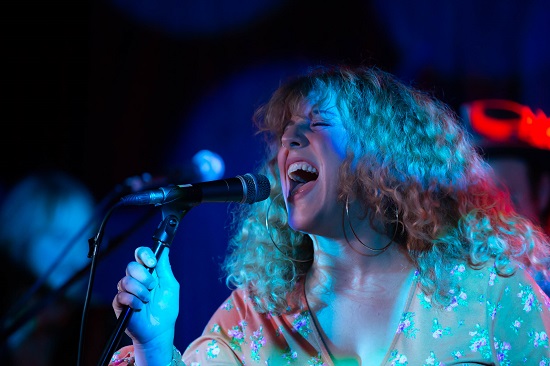
Lauren Housley is the ‘GIRL FROM THE NORTH’ whose new album was released in April 2021. Dealing with love, loss and the turbulence of growing up and learning about life, Lauren brings a refreshing air of optimism and heart-warming hope with an empowering belief in oneself to overcome obstacles. Hear some of Lauren’s new, unreleased material in a stripped-back intimate setting.
This was the first gig at The Half Moon Putney since their closure in March 2020. Lauren, the band, and the audience were all so appreciative of this opportunity to be part of a live performance.
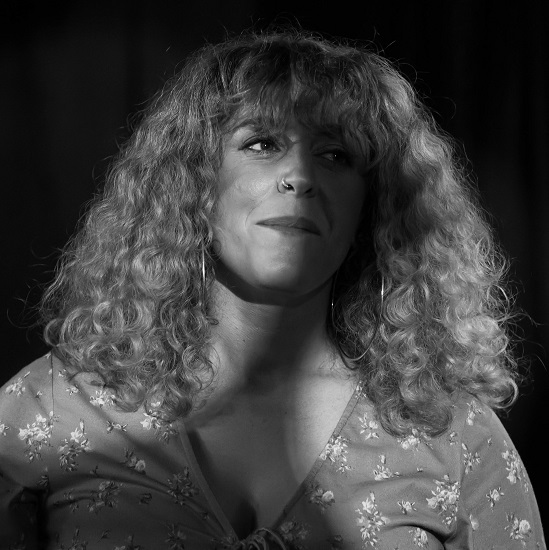
Natalie Shay @ The Camden Assembly
Natalie Shay is an indie pop/rock artist & BRIT School graduate hailing from North London. The multi award-winning musician has established an ever-growing presence, media acclaim and a loyal fanbase through her explosive live performances and viral-worthy anthems, recognising her as one of the UK’s hottest emerging talents.
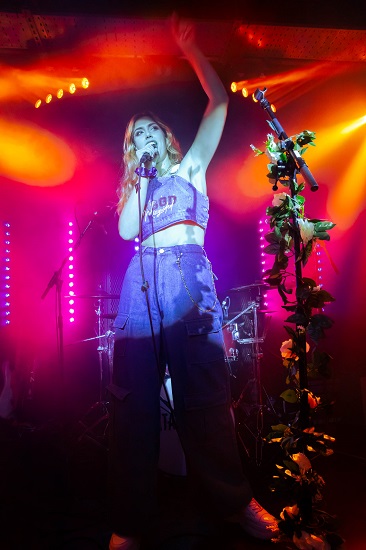
Shay sold out two headline shows in 2019, with her music continuing to pique the interest of notable publications such as Billboard, Clash and The Line of Best Fit. To date, she has amassed hundreds of thousands of streams, with her single, ” being placed in Spotify’s New Music Friday, New Pop UK & Wholesome Editorial Playlists. She has also worked on EDM tracks, racking up over 2 million streams to date.
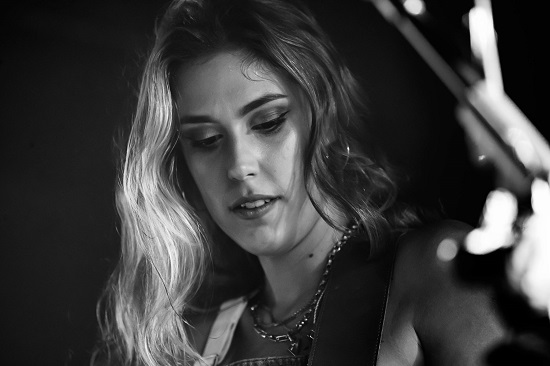
Natalie is now set to release her latest 80s inspired single, New Wave, delivering a relatable anthem for those new lovers.
She performed a powerful and accomplished set headlining what was going to be the release party for her last EP, but as that was released in April 2020, we all had to wait 18 months because of COVID restrictions. However, it was well worth the wait, especially as she included a new song about coming to terms with who she is, past, present and future – that she wrote during lockdown. The full band added to the depth of the performance. These are just a few of the many amazing performance I’ve seen this year. It was really nice to be back as some great grass roots venues. Another great year of live music, in spite of the limited access due to the pandemic.
 Grace Jones’ 1981 “Nightclubbing” album had nine tracks and so does La Roux’s second album, five years in the making and named “Trouble in Paradise”. Besides the stingy number of songs – and don’t try looking for bonus tracks anywhere because you won’t find them – Grace Jones seems to have made a substantial impact on Brixton local Elly Jackson, aka La Roux. Apart from the image (androgynous female, indeterminate but presumed sexual orientation, bit scary), Jackson has quite dramatically amended her musical outlook since the Grammy-nominated, metallic synth-pop of her 2009 debut and opted instead for a sweltering and more organic and sensual soundscape a la Jones’ infamous Compass Point sessions. This shift in vision has not been without consequences and has subsequently resulted in the departure of La Roux’s partner in crime Ben Langmaid. If anything quality control has improved since their earlier and hugely successful collaborative work and any fears of Jackson faltering without her presumed contemporary are unfounded here.
Grace Jones’ 1981 “Nightclubbing” album had nine tracks and so does La Roux’s second album, five years in the making and named “Trouble in Paradise”. Besides the stingy number of songs – and don’t try looking for bonus tracks anywhere because you won’t find them – Grace Jones seems to have made a substantial impact on Brixton local Elly Jackson, aka La Roux. Apart from the image (androgynous female, indeterminate but presumed sexual orientation, bit scary), Jackson has quite dramatically amended her musical outlook since the Grammy-nominated, metallic synth-pop of her 2009 debut and opted instead for a sweltering and more organic and sensual soundscape a la Jones’ infamous Compass Point sessions. This shift in vision has not been without consequences and has subsequently resulted in the departure of La Roux’s partner in crime Ben Langmaid. If anything quality control has improved since their earlier and hugely successful collaborative work and any fears of Jackson faltering without her presumed contemporary are unfounded here.
“Uptight Downtown” is a pretty opaque chronicle on the Brixton riots, a song that may have sounded more topical if had been released when it was written some three years ago. Not exactly a social comment of any real substance, although you sense this wasn’t the point, it is a mid-tempo and juddering pop monster that acknowledges its musical heritage as well as moving straight through any on-trend sounds to form its own unique and modern sound. It fades in on a big bass beat before post-Chic Nile Rodgers guitars echo his production on David Bowie’s “Let Dance” and has a horn refrain which is similar to that of Grace Jones’ “I’m Not Perfect”, again a Rodgers production. “Tropical Chancer”, maybe the most fully realised moment here and the track that squarely apes Jones with a rhythm track that is the identical twin of “My Jamaican Guy”, it’s the stuff of summer anthems. There is tremendous delight to be had hearing Jackson lamenting the introduction of her tropical chancer via a dancer in that she doesn’t slip into an American accent as many would and is lyrically inventive and oddly British in its underwhelmed way of story-telling.
“Kiss and Not Tell” skips and clicks and sounds more than anything like the eighties pop-funk boy band Haircut One Hundred with its scratching guitar and staccato energy and boundless joy. It is one of the few instant pleasures here; it’s infectious and naggingly melodic and bowls over on first listen. Other tracks such as the, by turns urgent, and then spacey “Cruel Sexuality”, which will only generate further speculation surrounding the singer’s own sexuality, and the sharp, xylophone and horn-punctured, “Sexotheque” take a bit longer to love but when they hit, they hit hard. This trio of songs are all about sex but they are not at all explicit in their descriptions of lives which are led by carnal cravings; their sensuality is to be found elsewhere. All of these tracks are so lovingly and beautifully crafted and incorporate subtle musical and sonic detours sometimes lasting no more than ten seconds and never sounding like mass-produced, producer-dictated music which is a large part of its engaging and seductive nature.
“Silent Partner”, one of only three tracks here that would have also sounded at home on La Roux’s debut, is an attempt at an urgent, episodic dance track. The most uptempo song on “Trouble in Paradise”sounds instantly familiar in that it channels 1977 disco classic “Black is Black”, builds to an “I Feel Love” synth pile-up and, in the last minute or so, eventually turns into The Three Degrees hysterically phrased hit “Givin’ Up, Givin’ In”, another Moroder production. As thrilling as this may sound, it doesn’t quite come together in the way it should and La Roux does not introduce either enough vocal or melodic diversity or intensity to keep the full seven minutes completely interesting and on-track for its duration. A very good four minute song however, which, when stretched out, confirms that there are still some areas which Jackson needs to fully master.
“Let Me Down Gently”, another track which in its second half revisits that steely sound from the earlier La Roux signature, does a far more effective job at building tension and momentum and is the album’s real centrepiece – a mournful synth ballad that teases itself slowly with a real majesty. The other ballad “Paradise is You” alludes to the album’s tropical themes and is a hazy, romantic and piano stroked comedown. The sound is fully fleshed out by swirling synths and building harmonies and it’s only on the final track, “The Feeling”, which is the oldest and only weak song here, with its jarringly thin and hollow electronics and return to Jackson’s notably absent falsetto, that the magic comes to an abruptly premature end.
Current prevailing musical styles or trends including trap, EDM or r’n’b pop don’t get a look in here and La Roux’s musical cues end at around 1986 but never once does this result in parody or nostalgic navel-gazing . With not quite every track here being essential it only just misses out on classic status, unlike her heroine Jones’ seminal “Nightclubbing”, which from the get-go contained not one ounce of fat, there is some filler congesting the brief playing time of “Trouble in Paradise”. Possessed and determinedly individual, however, this is still one of the most delightfully uncynical and smart pop albums for some time. La Roux is proving that although she is clearly serious about the potential aims of modern music, she is also having tremendous fun making it – without a doubt the definitive summer release of 2014.
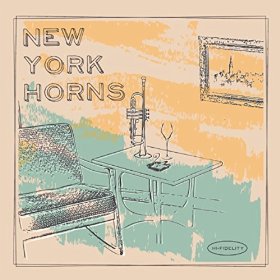 It’s relatively easy to record an album these days; you can do it at home or maybe in a studio and it won’t cost you the earth. You can organise your own distribution online or at live shows; you won’t get rich but you will get some return for your creativity. Not everything released by this route is good; there are way too many vanity projects, but occasionally something really worthwhile emerges. Sometimes a group of talented and like-minded musicians get together and just play the tunes they really want to play. If it makes a few dollars, that’s fine, but that’s not really the point because the musicians are playing the music they want to play and having a bit of fun with their own original material and a few covers. Very, very occasionally the result is an album packed with, superb performances and arrangements that you want to listen to again and again. “New York Horns” is one of those.
It’s relatively easy to record an album these days; you can do it at home or maybe in a studio and it won’t cost you the earth. You can organise your own distribution online or at live shows; you won’t get rich but you will get some return for your creativity. Not everything released by this route is good; there are way too many vanity projects, but occasionally something really worthwhile emerges. Sometimes a group of talented and like-minded musicians get together and just play the tunes they really want to play. If it makes a few dollars, that’s fine, but that’s not really the point because the musicians are playing the music they want to play and having a bit of fun with their own original material and a few covers. Very, very occasionally the result is an album packed with, superb performances and arrangements that you want to listen to again and again. “New York Horns” is one of those.
So, who are the New York Horns? Well the horn players are Chris Anderson (trumpet and flugelhorn), John Isley (tenor and baritone sax and bass clarinet) and Neal Pawley (trombone and vocals) and they’re better known as the horn section of Southside Johnny the Asbury Jukes. Here they’re aided and abetted by fellow-Jukes Jeff Kazee (piano, Hammond B3, keys and vocals) and Glenn Alexander(guitars, dobro, mandolin and vocals) and a rhythm section of Shawn Pelton (drums and percussion) and Tony Tino (electric bass).
The album opens with a very different instrumental take on KT Tunstall’s breakthrough song “Black Horse & the Cherry Tree”. Where the original builds gradually by using a loop pedal for instrumental and vocal parts, the NYH version comes in, after a quick guitar intro, at full strength with Latin American percussion (courtesy of Marc Quinones) and perhaps a hint of early Santana. Chris Anderson’s tone poem “Morningside at Midnight” is next, taken at a walking tempo, and evoking the spirit of Morningside Heights with electric piano, wah-wah guitar and unison sax and trumpet. The Hank Williams classic “Hey Good Lookin’” is the first vocal piece, driven along by a guitar riff and horn fills before the sax, guitar and Hammond solos kick in. “Song for Levon”, a Chris Anderson and John isley co-write is a tribute to Levon Helm. It’s stately and mournful in classic New Orleans tradition and features Southside Johnny as guest harmonica player.
The uptempo jazz-funk of John Isley’s “Little Miss Thing” wouldn’t sound out of place on either of Donald Fagen’s first two solo albums and features the first trombone solo on the album from Neal Pawley; it’s great fun. “Can’t Stand to See You Cry”, written and sung by Jeff Kazee, is a powerful soul song with a superb plaintive vocal and an arrangement that Allen Toussaint would be proud of while “Strollin’ With Sean” is a fairly straightforward blues driven along by a horn riff and it’s another chance for the guys to solo for all they’re worth and have a great time. The final cover on the album is John Hiatt’s “Little Head” which retains the feel of the original while adding punch with horn fills.
John Isley’s “78 Below” opens with an uptempo Nile Rodgers –style lead/rhythm riff which, with the punchy bass, drives the piece along underneath a staccato muted trumpet melody before the mood mellows again with Chris Anderson’s “More Than Tears”. Opening with a restrained combination of piano, acoustic guitar and mandolin, this moody and melancholic piece is perfect for the flugelhorn which Chris uses to carry the main melody. John Isley’s “Under the Hood” is an atmospheric piece using Hammond and the horn ensemble to create the mood and features a muted trumpet solo from Chris Anderson. The album’s closing song, “Nothing Left to Say”, opens slowly in New Orleans jazz funeral style, with a guest vocal by Christine Ohlman before erupting just before the halfway mark into uptempo New Orleans jazz with trumpet and sax counterpoint. There’s also a lyrical message here which underpins the whole album; however bad things get, there’s always music to pull you back, whether you play it or listen to it. It’s a perfect way to close the album.
The beauty of this album is that it was made because the musicians involved really wanted to make it. They had a lot of ideas and they wanted to get those ideas out there to people who might want to hear them. It’s not about focus groups or marketing teams; it’s about strong, sometimes very personal, material arranged well and played superbly. If you need to label it, I suppose it’s jazz, but it also pushes out in other directions as well, towards funk and old school soul; there’s certainly plenty of variety on display. Check out some of the song links here and think seriously about buying yourself a copy, if only to let a bunch of great musicians know that some people out there are actually getting the message.
Available now from Amazon and iTunes.
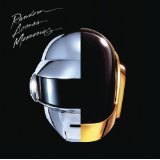 I think this is a first for the Riot Squad. I probably shouldn’t be surprised that two of our contributors wanted to review this album. Instead of choosing one or the other, we thought it would be great to publish both reviews. They come at the subject from different directions and experiences but the conclusions are… well you can read that for yourself.
I think this is a first for the Riot Squad. I probably shouldn’t be surprised that two of our contributors wanted to review this album. Instead of choosing one or the other, we thought it would be great to publish both reviews. They come at the subject from different directions and experiences but the conclusions are… well you can read that for yourself.
Daft Punk are an act with nothing to prove. Given the amount of work that’s gone into “Random Access Memories” it’s easy to think otherwise but when you consider how the world fell at their feet upon the announcement of the album and the success its pre-release single, “Get Lucky”, achieved it’s fair to say it’s become clear that they’ve earned their place in the sub-consciousness of today’s pop world. Everything surrounding this new album almost allows it, in some people’s minds, to transcend the notion that the new release can be considered simply that: an album, which after all is all we’ve received here. Many bands whose status grows to the heights of an act like Daft Punk’s feel the need to use a new release to reignite the world’s passion for them, they craft a new statement defining their existence and remind everyone why they’re even here to begin with but here that’s not the case. With “Random Access Memories”, Daft Punk are simply paying tribute to the music that inspired them and the world and reminding people why we love it so. This album’s not about them, it’s about something much bigger and that’s nice.
This is most clear on the third track, “Giorgio by Moroder”, featuring a monologue from the almost-synonymous producer detailing his early music career. It begins as less of a piece of music, more a vocalised autobiography punctuated by a backing instrumental, however it evolves into a huge-sounding clash of Daft Punk’s usual electro-house sounds and a live orchestra, featuring rather explosive drumming. This song is where Daft Punk’s motive behind the creation of this album is most prevalent and obvious and is actually very exciting. It’s one of the moments where it feels like the duo truly deserve the status they’ve garnered over the years, at once displaying their skills at creating both futuristic and boundary-pushing musical landscapes and producing something an listener can relate to and enjoy. However these moments are actually few and far between. That’s not to say the rest of the album is bad by any means, although there is a lot of filler, just that much of it seems dwarfed by the ambition and scale of some tracks.
For example when you consider “Touch”, a sprawling eight-minute epic featuring Paul Williams on vocals which seems to try and explore all kinds of musical styles, including both the sounds of music halls from the 40s and string-laden power ballads, and compare it with something as simple as “The Game of Love”, a smooth, funky, soulful, robot-voiced jam that Daft Punk fans will be very used to by now, it feels like a lot more care and thought has gone into the tracks featuring the rather impressive list of collaborators. The duo’s solo tracks suffer and pale in comparison, feeling like bridges over the gaps between collaborations. Often it seems like extraordinary measures have been made just to distinguish them, like the bizarre Disney-esque fanfare pinned to the start of “Beyond”.
However it is these collaborations which save the record so the focus they’ve received is understandable (or perhaps the converse is true). Personal highlights include the irresistible Julian Calasblancas-featuring “Instant Crush”. His vocals are run through pitch-shift software which makes him sound like a falsetto version of one of Daft Punk’s own robot voices. The catchy, rhythmic runs in the chorus are nearly the most memorable moment on the album. “Doin’ It Right”, featuring Panda Bear from Animal Collective, is by far the simplest track here and is gorgeous. It is literally just AnCo vs. Daft Punk with the collaborator singing over a spine-tingling ascending robot vocal loop with very little else interfering. Nile Rodgers’ presence is made very clear, with his signature staccato guitar licks gliding infectiously over three tracks, including of course the full album version of the previously heard “Get Lucky” which now flows properly and feels fully formed in its extended album version.
The most consistent thing on “Random Access Memories” is the meticulous production values, ensuring that every track at least sounds meaningful and organic. Every instrument is crisp and warm, with overall soundscapes feeling very spacious yet united. Daft Punk often seem to try and recall the sound of seventies disco, free it up, give it a cleaner quality with more room to breathe and mix it up with their own unique feel, all the while pushing everything in a new direction. It’s a very sincere venture and elements which feel borrowed rarely seem to act as a crutch.
“Random Access Memories” is a pleasing but flawed album. When you strip away the notions of this release acting as a movement or an event and look at what is displayed front to back on a disc, what’s here is largely enjoyable; not consistently but the highs remind us why Daft Punk are now so highly-revered. While nothing is as instant or probably as memorable as hits of old like “One More Time”, several tracks here do deserve to be remembered and the overall product is very warm, it’s just that the duo’s sights seem to get distracted along the way. If you go in listening to this as you would any old album then there’s enjoyment to be had to a degree. If you fancy believing the promises made that this is the new best album ever, please calm down.
Louie Anderson (3 stars)
The best thing to do with an album is just listen to it; I’ve been doing this for 35 years now and can testify to its effectiveness. In the small, market town that I grew up in, I visited the tiny, local independent record shop almost every day for at least 2 months after school and Saturday mornings, waiting for Grace Jones’ “Nightclubbing” album to appear. The 2 staff, sick to the back teeth of seeing me , weren’t exactly sure when it was going to be released; it didn’t seem to be confirmed anywhere and then one day, there it was, this mysterious, magical disc. No inner sleeve notes, no guest producers or artists, no media assault and no idea how it would sound. I almost certainly ran home and then consumed every second of this amazing record, it helped me deal with the problems of being an outsider and influenced me in ways that I certainly didn’t understand then. It has since become an album that is considered a classic, a glimpse into the future which still doesn’t sound dated now and the house band of Sly and Robbie and the late Alex Sadkin (collectively known as the Compass Point All Stars), the ultimate in session musicians, are now stars in their own right. I can’t imagine what it would like if this album were to be released today. The hype that would be attached to it would probably break the internet.
I’ve been listening to Daft Punk’s fourth album proper, ”Random Access Memories”, on and off during the last week; on headphones, on my stereo at home, on my iPad. I’ve heard it in some of the few remaining record shops in central London and in a couple of bars, blaring out. It is without doubt an album that is ambitious, outrageous and gorgeous sounding, but try if you can to turn down the noise of the hype, the incredible marketing campaign which still hasn’t given us a full video for one song but has turned this album, by a band who were merely popular before but now appear to be reinvented as ‘iconic’, into a full blown event. It’s even been claimed that these two French men who are never seen without their robot heads, have rescued dance music from something; I’m not sure what exactly. This is all of course quite amazing, but what is it you can actually hear? You just need to try and listen.
Nile Rodgers is one of the two men, the other being the late Bernard Edwards, responsible for The Chic Organisiation, words that my still make my heart beat a little bit faster when I see them. Chic made their own intelligent, beautiful and sometimes euphoric, sometimes sad dance records and Rodgers and Edwards, along with their own session band and singers, went on to produce other artists such as Sister Sledge, Diana Ross, David Bowie and Deborah Harry. Rodgers plays guitar on this album, most predominantly on the first track released from the album, “Get Lucky” and this song has really struck a chord with music buyers such is its immediate, enormous success; with Pharrell Williams’ falsetto, it has a strong melody line and its lyrical optimism is welcomed in what is globally, a pretty bleak time. Compared to the Chic canon of hits how would this one measure up? Well, it’s not “Good Times”, “Le Freak” or “I Want Your Love”. Lyrically, structurally and rhythmically “Get Lucky” would be a minor Chic record, more reminiscent of their 80’s work where a looser, less urgent and less staccato sound came to the fore and their success began to wane. “Lose Yourself To Dance” is not “Lost in Music;, Rodgers’ guitar, when it appears after the false start, is still so beautiful and so fluid but the song plods and is a good example of repetition not working although it can be a key component to some great dance music. Maybe I shouldn’t be drawing parallels between these two songs to Chic compositions but surely that’s what Daft Punk have tried to recreate here? Harking back to a time where music, dance music in particular, was more organic, soulful and, somewhat ironically for two men who have never been seen without their robot helmets glued to their heads, human. It would be their own fault if comparisons are made.
“I Feel Love” is not a song, it’s a place which Giorgio Moroder, record producer extraordinaire, and disco goddess and his most accomplished muse, Donna Summer, built together in 1977, took residence in and have never left; people still get lost in it and will continue to. Play it now and it still sounds like it’s from the future; its other-worldliness and beauty intact. Moroder himself explains how he came to make music on the second most audacious track here called “Giorgio by Moroder” and it’s one of the few tracks where, like “I Feel Love”, something happens in your brain which makes it respond to what it can hear in a very visceral way, a physical urge to react, with the last third of this nine minute opus in particular being a complete oral riot and making me grin like a crazy fool. An amazing bass line, synth hook, scratching effects, strings, live drums and an energy that is not matched again here and, despite the structure of the song, which is more like a suite and is very in keeping with Moroder’s more ambitious work (the original sixteen minute version of “McArthur Park”), this still sounds like a Daft Punk record, the aims of this album being very much achieved here.
“Touch” is a silly, show-off mess of a show tune, not a good show tune but a pretentious, overblown, rock-opera cheesy one made up of four different parts playing over eight minutes. The most divisive track on “RAM”, it has a full orchestra and a choir and is the only time you will hear a female voice albeit one blended with other vocals during the album’s seventy-five minute running time. This is one of the main flaws regarding the decisions made by Daft Punk in their choice of collaborators. Here’s the list in full; Pharrell Williams, Nile Rodgers, Paul Williams, Giorgio Moroder, Chilly Gonzales, DJ Falcon, Todd Edwards, Panda Bear and Julian Casablancas from The Strokes. A complete boys club then and it’s an odd decision to exclude any kind of female presence when the genre which is being honoured, or being paid tribute to here, was one where the female vocalist was key, a generation of women who had almost dysfunctional levels of intimacy with the producer and who went on to record seminal pieces of work. No sign of that here though but Pharrell Williams, to his credit, has already, quite rightly, put Madonna’s name forward.
There are four, maybe five, tracks which have the trademark, sad robot vocoder sound or are completely instrumental. They noodle and doodle around a bit, electronic keyboards and soft rock guitar, quite beautifully arranged and played but seem created to fulfil the cliché of music made for the background, something that their previous output could not be accused of. Julian Casablancas’ very heavily treated vocals probably get the best actual song on here with the sombre, minor key “Instant Crush” and the minimal, electro jolt of “Doing It Right” with a bright, white Panda Bear vocal recalls a lesser “Digital Love”. The choppy chords on the opening track, “Give Life Back to Music Again”, again featuring Rodgers and his magic guitar, bring back memories of and sound a lot like Oliver Cheatham’s “Get Down It’s Saturday Night”, nice but hardly inspired or original.
I have had a long term love affair with Daft Punk’s 2001 album, “Discovery”. It samples Barry Manilow (an early clue maybe?) and features at least four incredible songs which will contribute in helping to define a decade in music and culture generally. “RAM” announced itself loudly and long before its actual arrival and now it’s here it feels underwhelming and is nostalgic, clinical, and occasionally brilliant and will be a musical trainspotter of a certain age’s treasure trove. I’ve been guilty of indulging that part of me in this review. Giorgio Moroder speaks about his desire of wanting to create the sound of the future here, something he achieved with little fanfare, a bit like Grace, and this is what “Discovery” sounded like to a lot of people when it appeared some 12 years ago. The fact that it influenced pop (and r’n’b, which ended up becoming the new pop) to the extent that it did is still unbelievable; it sounded so underground, so consigned to a club! And this album is apparently a reaction to the further progression of commercial dance music labelled EDM (electronic dance music), which Daft Punk vocally dislike but are of course partly, and probably quite a large part, responsible for. Instead of looking to the future though, the duo now seem content to swoon over the past, a decision that will excite many I’m sure but in terms of their own evolution, it’s hard to hear anything that hasn’t been heard many times before. It’s clear though that the ultimate message being conveyed with “RAM” is that by aligning themselves with two of the best, most prolific and important dance producers and writers of our time, Daft Punk also consider themselves part of that gang too; only time can tell. Ask Giorgio, he’ll tell you.
John Preston (3 stars)


